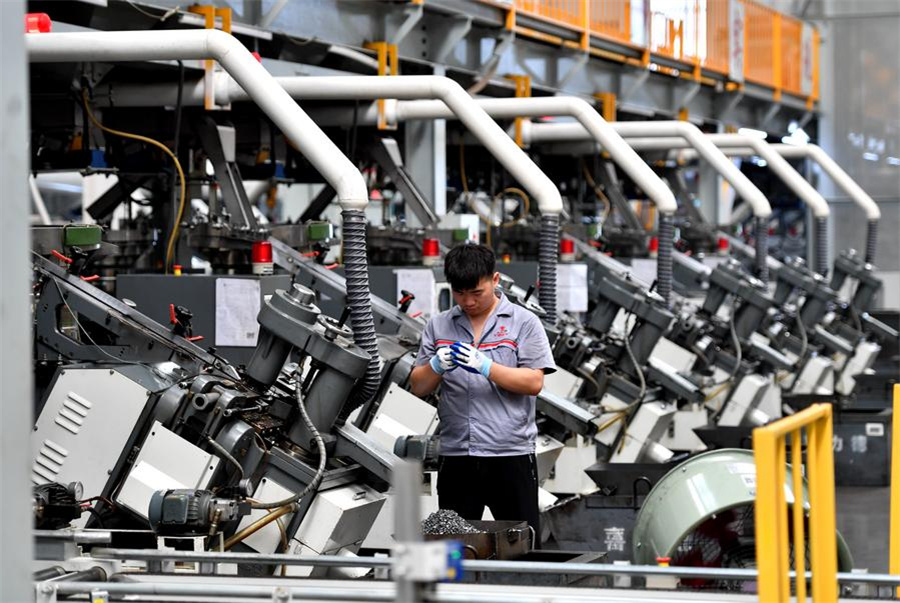Chinese economy on track for full-year targets

A worker works at an intelligent digital workshop of a fastener manufacturing company in Yongnian District of Handan, north China's Hebei Province, Aug. 16, 2024. [Xinhua/Wang Xiao]
BEIJING -- Economic data for the first three quarters of this year indicate that the Chinese government's policies to boost the economy have been effective, exemplified by notable progress in industrial transformation and upgrading. With greater efforts, the world's second-largest economy is on track to achieve its full-year targets.
According to the National Bureau of Statistics (NBS), China's gross domestic product (GDP) grew by 4.8 percent year on year in the first three quarters of the year, with a 4.6 percent increase in the third quarter. This growth, amidst a challenging external environment and ongoing domestic economic restructuring, highlights the resilience and potential of the Chinese economy.
Overall, despite minor fluctuations, the national economy was generally stable with steady progress, characterized by steady increases in production and demand, stable employment and prices, and significant progress in high-quality development. Last month saw improvements across most production and demand indicators, bolstering market expectations and accumulating positive factors that support economic recovery.
In terms of structural adjustments, the value added in equipment manufacturing and high-tech sectors grew by 7.5 percent and 9.1 percent, respectively, significantly surpassing the 5.8 percent growth rate for all designated large industrial enterprises. This shift reflects a transition toward a more efficient, technology-driven industrial model.
Additionally, positive indicators suggest a recovery trajectory. Exports outperformed expectations, increasing by 6.2 percent year on year in the first three quarters. In the primary sector, China has achieved a bumper summer harvest and anticipates a promising autumn harvest.
A series of policy measures aimed at stabilizing the real estate market has led to positive changes. Transactions for pre-owned homes have gone up, and major Chinese cities saw a stabilization in the decline of commercial residential property prices in September, accompanied by improved expectations for the sector. Minister of Housing and Urban-Rural Development Ni Hong stated on Thursday that China's real estate market is beginning to bottom out after three years of adjustment.
Additionally, initiatives such as large-scale equipment upgrades and trade-ins of consumer goods have helped to expand domestic demand. Notably, sales of automobiles and furniture both rose by 0.4 percent in September, marking a shift from negative to positive growth.
Recent incremental policies from authorities have sent strong signals to boost economic growth. As these policies gradually take effect, their impact on stabilizing growth and enhancing market expectations will become increasingly evident.
China still has additional policy tools available to further stimulate growth. After a cut by 0.5 percentage points in late September, the central bank is considering a further cut of 0.25 to 0.5 percentage points in the reserve requirement ratio, which may be implemented before the end of 2024 depending on market liquidity conditions.
Despite the global economy facing uncertainties due to geopolitical risks, China remains one of the most stable and resilient economies, with the fastest growth among major nations.
There are ample reasons to believe that the Chinese economy in the final quarter of this year -- supported by the effective implementation of growth-boosting measures -- will continue the stabilization and recovery trend in September and help China meet its annual growth target.
























